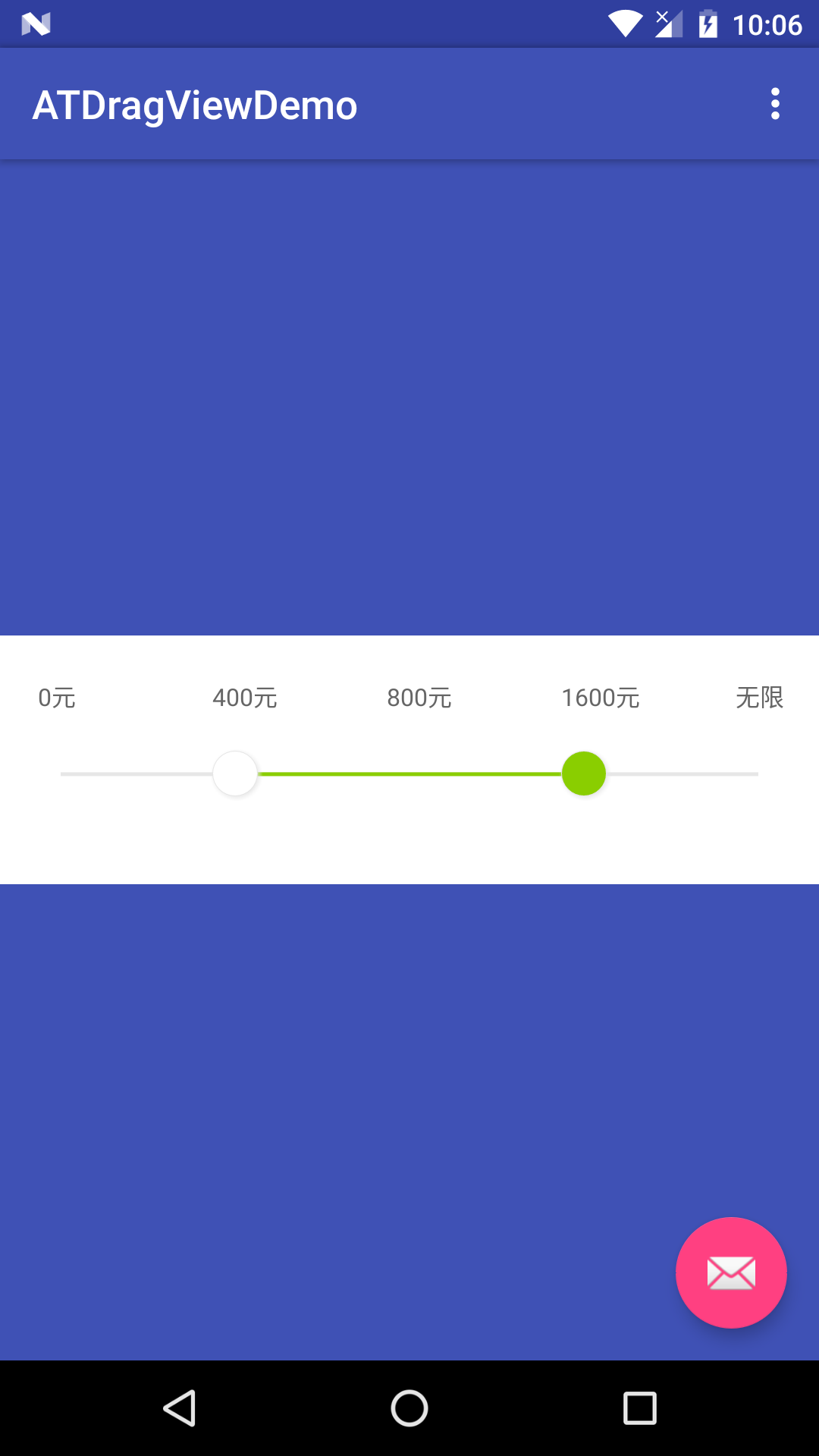編輯:關於Android編程
Android AsyncTask實現機制
示例代碼:
public final AsyncTask<Params, Progress, Result> execute(Params... params) {
return executeOnExecutor(sDefaultExecutor, params);
}
public final AsyncTask<Params, Progress, Result> executeOnExecutor(Executor exec,
Params... params) {
if (mStatus != Status.PENDING) {
switch (mStatus) {
case RUNNING:
throw new IllegalStateException("Cannot execute task:"
+ " the task is already running.");
case FINISHED:
throw new IllegalStateException("Cannot execute task:"
+ " the task has already been executed "
+ "(a task can be executed only once)");
}
}
mStatus = Status.RUNNING;
onPreExecute();
mWorker.mParams = params;
exec.execute(mFuture);
return this;
}
execute先調用onPreExecute()(可見,onPreExecute是自動調用的)然後調用exec.execute(mFuture)
public interface Executor {
void execute(Runnable command);
}
這是一個接口,具體實現在
private static class SerialExecutor implements Executor {
final ArrayDeque<Runnable> mTasks = new ArrayDeque<Runnable>();
Runnable mActive;
public synchronized void execute(final Runnable r) {
mTasks.offer(new Runnable() {
public void run() {
try {
r.run();
} finally {
scheduleNext();
}
}
});
if (mActive == null) {
scheduleNext();
}
}
protected synchronized void scheduleNext() {
if ((mActive = mTasks.poll()) != null) {
THREAD_POOL_EXECUTOR.execute(mActive);
}
}
}
從上面可知,AsyncTask執行過程如下:先執行onPreExecute,然後交給SerialExecutor執行。在SerialExecutor中,先把Runnable添加到mTasks中。
如果沒有Runnable正在執行,那麼就調用SerialExecutor的scheduleNext。同時當一個Runnable執行完以後,繼續執行下一個任務
AsyncTask中有兩個線程池,THREAD_POOL_EXECUTOR和SERIAL_EXECUTOR,以及一個Handler–InternalHandler
/**
* An {@link Executor} that can be used to execute tasks in parallel.
*/
public static final Executor THREAD_POOL_EXECUTOR
= new ThreadPoolExecutor(CORE_POOL_SIZE, MAXIMUM_POOL_SIZE, KEEP_ALIVE,
TimeUnit.SECONDS, sPoolWorkQueue, sThreadFactory);
/**
* An {@link Executor} that executes tasks one at a time in serial
* order. This serialization is global to a particular process.
*/
public static final Executor SERIAL_EXECUTOR = new SerialExecutor();
private static InternalHandler sHandler;
SERIAL_EXECUTOR用於任務的排列,THREAD_POOL_EXECUTOR真正執行線程,InternalHandler用於線程切換
先看構造函數
public AsyncTask() {
mWorker = new WorkerRunnable<Params, Result>() {
public Result call() throws Exception {
mTaskInvoked.set(true);
Process.setThreadPriority(Process.THREAD_PRIORITY_BACKGROUND);
//noinspection unchecked
return postResult(doInBackground(mParams));
}
};
mFuture = new FutureTask<Result>(mWorker) {
@Override
protected void done() {
try {
postResultIfNotInvoked(get());
} catch (InterruptedException e) {
android.util.Log.w(LOG_TAG, e);
} catch (ExecutionException e) {
throw new RuntimeException("An error occured while executing doInBackground()",
e.getCause());
} catch (CancellationException e) {
postResultIfNotInvoked(null);
}
}
};
}
看到了熟悉的doInBackground了吧,然後調用postResult
private Result postResult(Result result) {
@SuppressWarnings("unchecked")
Message message = getHandler().obtainMessage(MESSAGE_POST_RESULT,
new AsyncTaskResult<Result>(this, result));
message.sendToTarget();
return result;
}
主線程中創建InternalHandler並發送MESSAGE_POST_RESULT消息,然後調用finish函數
private static class InternalHandler extends Handler {
public InternalHandler() {
super(Looper.getMainLooper());
}
@SuppressWarnings({"unchecked", "RawUseOfParameterizedType"})
@Override
public void handleMessage(Message msg) {
AsyncTaskResult<?> result = (AsyncTaskResult<?>) msg.obj;
switch (msg.what) {
case MESSAGE_POST_RESULT:
// There is only one result
result.mTask.finish(result.mData[0]);
break;
case MESSAGE_POST_PROGRESS:
result.mTask.onProgressUpdate(result.mData);
break;
}
}
}
private void finish(Result result) {
if (isCancelled()) {
onCancelled(result);
} else {
onPostExecute(result);
}
mStatus = Status.FINISHED;
}
finish中調用onPostExecute。
AsyncTask工作流程:new MyThread().execute(1);
先構造函數,然後execute
構造函數只是准備了mWorker和mFuture這兩個變量
execute中調用onPreExecute,然後exec.execute(mFuture),其中響應了call函數,call中調用doInBackground,然後將結果傳給Handler然後finish掉,finish函數調用onPostExecute
你可能會奇怪,為什麼沒有onProgressUpdate,有注解可以解釋
/**
* Runs on the UI thread after {@link #publishProgress} is invoked.
* The specified values are the values passed to {@link #publishProgress}.
*
* @param values The values indicating progress.
*
* @see #publishProgress
* @see #doInBackground
*/
@SuppressWarnings({"UnusedDeclaration"})
protected void onProgressUpdate(Progress... values) {
}
也就是說必須調用publishProgress才會自動調用onProgressUpdate。
那如何調用publishProgress呢?
/**
* Override this method to perform a computation on a background thread. The
* specified parameters are the parameters passed to {@link #execute}
* by the caller of this task.
*
* This method can call {@link #publishProgress} to publish updates
* on the UI thread.
*
* @param params The parameters of the task.
*
* @return A result, defined by the subclass of this task.
*
* @see #onPreExecute()
* @see #onPostExecute
* @see #publishProgress
*/
protected abstract Result doInBackground(Params... params);
doInBackground說的很明確,在doInBackground函數裡面顯示調用publishProgress即可。
publishProgress源碼:
protected final void publishProgress(Progress... values) {
if (!isCancelled()) {
getHandler().obtainMessage(MESSAGE_POST_PROGRESS,
new AsyncTaskResult<Progress>(this, values)).sendToTarget();
}
}
private static class InternalHandler extends Handler {
public InternalHandler() {
super(Looper.getMainLooper());
}
@SuppressWarnings({"unchecked", "RawUseOfParameterizedType"})
@Override
public void handleMessage(Message msg) {
AsyncTaskResult<?> result = (AsyncTaskResult<?>) msg.obj;
switch (msg.what) {
case MESSAGE_POST_RESULT:
// There is only one result
result.mTask.finish(result.mData[0]);
break;
case MESSAGE_POST_PROGRESS:
//****************************************在這裡調用
result.mTask.onProgressUpdate(result.mData);
break;
}
}
}
感謝閱讀,希望能幫助到大家,謝謝大家對本站的支持!
 Android Camera子系統之進程/文件View
Android Camera子系統之進程/文件View
本文基於Android 4.2.2從進程/文件的角度審視Android Camera子系統。 AndroidCamera子系統的整體架構分成客戶端(Client)和
 Android_自定義雙向SeekBar
Android_自定義雙向SeekBar
目標:雙向拖動的自定義View國際慣例先預覽後實現實現步驟自定義屬性的抽取 view尺寸的計算 相關內容的繪制(文字,原點,背景進度條,當前進度條等等) 處理滑動事件大體
 Android Scroller及下拉刷新組件原理解析
Android Scroller及下拉刷新組件原理解析
Android事件攔截機制Android中事件的傳遞和攔截和View樹結構是相關聯的,在View樹中,分為葉子節點和普通節點,普通節點有子節點只能是ViewGroup,葉
 Android多媒體-支持的多媒體格式
Android多媒體-支持的多媒體格式
1.Network Protocols RTSP (RTP, SDP) HTTP progressive streaming HTTP live streaming dr